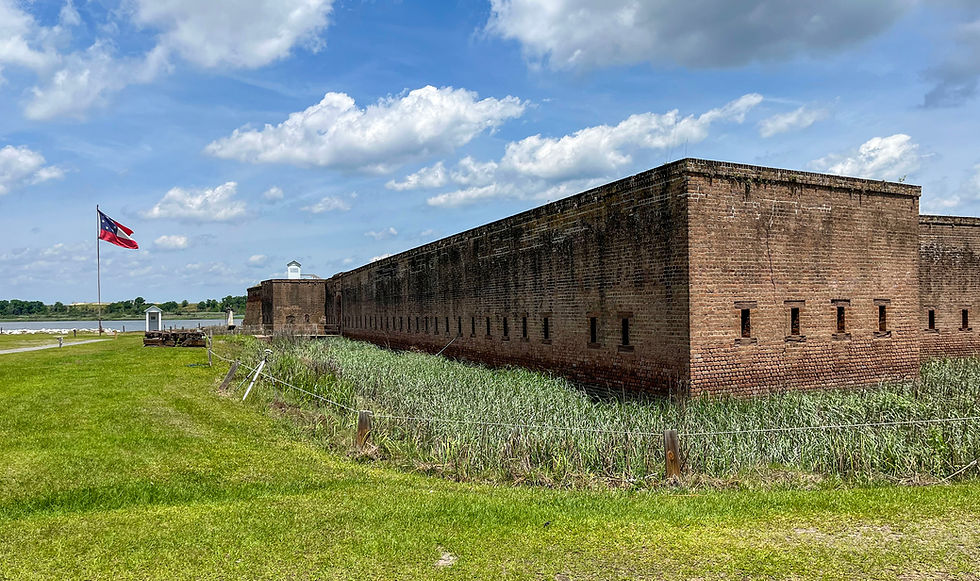The Dunlap Coke Ovens
- Tim Murphy

- Jun 25, 2023
- 3 min read
The scientific innovations conceived during the Second Industrial Revolution stimulated technological advancements in transportation, communication, and manufacturing that radically transformed America’s socioeconomic landscape. The meteoric rise of steel was conducive to this change. Groundbreaking mass production techniques (such as the Bessemer Process) proliferated steel reserves with unprecedented convenience and efficiency. With its structural superiority and wholesale accessibility, steel quickly overtook iron as the preferred material for engineering and infrastructural megaprojects.
Steel’s soaring popularity exponentially increased the demand for coke— a carbonized derivative of bituminous coal and primary fuel source for steelmaking. To produce coke, coal slack is crushed and loaded into furnaces. Once the combustible material is leveled, clay cement is applied around the furnace’s loading port (a process called “luting) which creates an airtight seal. In the absence of oxygen, kiln temperatures reach upwards of 2,000 degrees Fahrenheit. This extreme heat activates destructive distillation via pyrolysis—the decomposition and vaporization of volatile substances from raw materials. The end result is a grey, porous, carbon-rich substance that burns hotter than coal and is essentially smokeless when used as a reducing agent for steel production. For every two tons of coal, one ton of coke is produced.

In 1900—one year after the discovery of coal deposits around the Sequatchie Valley—the Douglas Coal and Coke Company established a 14,000-acre mining operation on Fredonia Mountain overlooking the nearby farming community of Dunlap, Tennessee. Within two years’ time, the sprawling industrial complex featured several mountaintop coal mines, 24 coke ovens, and an incline railway that operated between the facilities; however, labor shortages and insufficient productivity doomed the enterprise. By 1904, Douglas Coal and Coke was defunct.
The Chattanooga Iron and Coal Company purchased the former Douglas operation in 1905, adding a steam-powered coal washer and 144 coke ovens the following year. Business flourished over the ensuing decade, transforming Dunlap’s once-rural outskirts into a bustling blue-collar community. At its peak, the company town accommodated seven hundred residents—comparatively, Dunlap proper’s population totaled 765—and contained more than two hundred buildings, including two hotels, a commissary, and clubhouse. In 1916, Chattanooga Iron and Coal sustained a substantial financial blow when a boiler explosion destroyed its million-dollar coal washer. Although company executives managed to replace the damaged machinery and construct one hundred additional coke kilns, the lingering debts proved insurmountable. The industrial complex was sold to the Southern States Iron and Coal Company in 1919. Three years later, coke production permanently ceased. There were attempts to revive Dunlap’s mining operations during the late 1920s, but plummeting coal prices and global economic instability squandered these aspirations. The Dunlap Coke Ovens were ultimately abandoned in 1928.
In 1985, after decades of neglect and vandalism, the Sequatchie Valley Historical Association established Dunlap Coke Ovens Park and organized efforts to beautify and conserve Fredonia Mountain’s industrial remnants. Hundreds of volunteers removed trash, stabilized ruins, and catalogued key structures around the premises. The Association also constructed a full-size replica of the company Commissary, which currently serves as the Dunlap Coke Ovens Museum—home to Tennessee’s largest collection of historical mining photographs.

There are numerous footpaths that meander around this historic 88-acre park. The most popular option is the one-mile Coke Ovens Trail, which showcases five furnace “batteries,” coal washer ruins, and a replica coal mine. While the batteries were constructed during three distinct time periods, they all exhibit fundamentally similar sandstone and firebrick compositions. Each battery rests on a clay foundation, standing approximately 9 feet tall and 35 feet wide. Railroad tracks ran over top—spanning between 180 and 725 feet in length—delivering coal to individual coke ovens, each measuring twelve feet in diameter. The batteries are all in various stages of decay, but the 1916 Ovens (located directly east of the museum) are the best preserved.
The Coke Ovens Trail intersects with the Trail of Tears and old incline rail trace, both of which scale Fredonia Mountain’s rugged wilderness; however, these challenging hikes extend past park boundaries and are scantly maintained by private ownership. Although the park’s trail network is numbered, its nonsequential and convoluted layout makes it rather difficult to follow. For simplified navigation, begin on the eastern end of the park and follow the railroad beds west towards Coops Creek. This general route will encounter all points of interest while avoiding the pesky guidepost system.
The Dunlap Coke Ovens are inconspicuous, yet reminiscent of America’s rapid economic ascension. While the fires of industry have long been extinguished, these silent stone furnaces still burn with a tenacious legacy that fueled a revolution. Trail Rating: 8/10
For more information on the Dunlap Coke Ovens, check out Southeast Tennessee, Chattanooga Times Free Press, and Tennessee Crossroads on YouTube














































